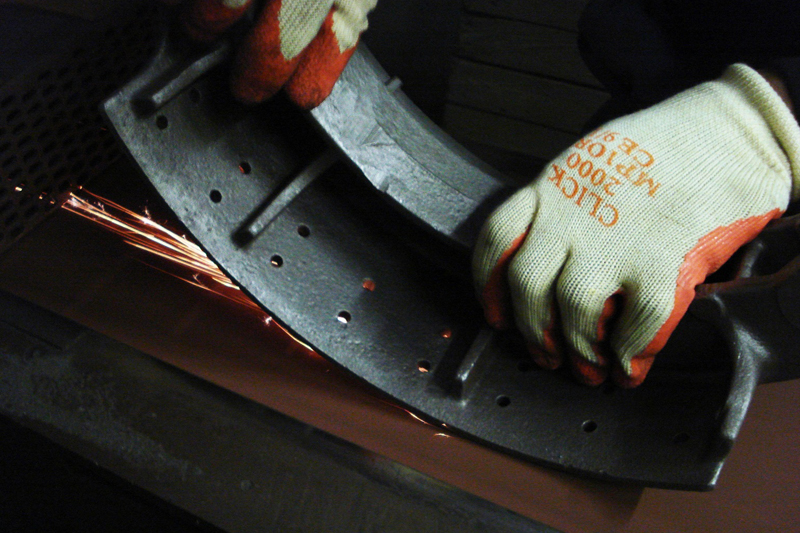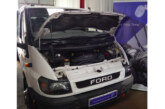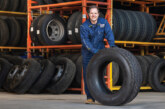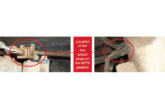
Brake shoe relining is currently enjoying a buoyant period for commercial vehicle brake specialist Roadlink International. Here, the company explains why technicians should always make sure a shoe’s riveting is of a suitably high standard.
When shear braking force is applied, if there is a gap present between rivet shank and brake lining, or rivet shank and brake shoe platform, there is potential for the lining to move. Once this occurs, the movement will increase rapidly, with consequent failure of the shoe assembly.

The shoe-making process
Roadlink’s production process for relining brake shoes ensures there is no gap between the rivet shank and brake lining/brake shoe platform. The brake lining is secured to the shoe in four ways:
■ The downwards‘ clamp force’ on the rivet head
■ The friction between the under side of the lining and the surface of the shoe. Each shoe platform is linished before relining. This is where the shoe platform is passed over a moving abrasive belt, which removes any high spots from the platform of the shoe, so that linings fit correctly
■ The force applied when inserting rivets causes the rivet to swell into the gap of the rivet hole in both the lining and the shoe, therefore ‘locking’ the lining firmly to the shoe platform
■ The rollover on the underside of the shoe secures the rivet in place from underneath
These four different forces ensure everything is entirely locked into place. This is why quality riveting in a remanufactured brake shoe is critical to ensuring safety.
Roadlink’s brake shoe reline operation is approved to ISO9001:2015 quality and ISO14001:2015 environmental standards. The company adheres to a 15-stage production process for relining brake shoes. This involves rollers being checked where applicable and shoe platforms linished, then treated with an anti-corrosion long lasting water-based paint, unique to Roadlink.
An inspection is undertaken after each stage and shoes come supplied with a full warranty. Every Roadlink exchange brake shoe carries a unique serial number that allows for product traceability.
The company’s brake shoe reline operation was reportedly the first in the UK to achieve the coveted Brake Assured status. The ‘Brake Assured’ symbol guarantees that brake shoes are fully remanufactured to the highest product quality and safety standards.
Best practice
Technicians should never fit a brake shoe with loose rivets. When the rivet swells into the gap on both the brake lining and platform of the shoe, this locks everything in place. Even without the downwards clamp force or the rollover on the underside, if the rivet has swelled sufficiently, this alone should stop any braking pressure forcing the linings to move.








